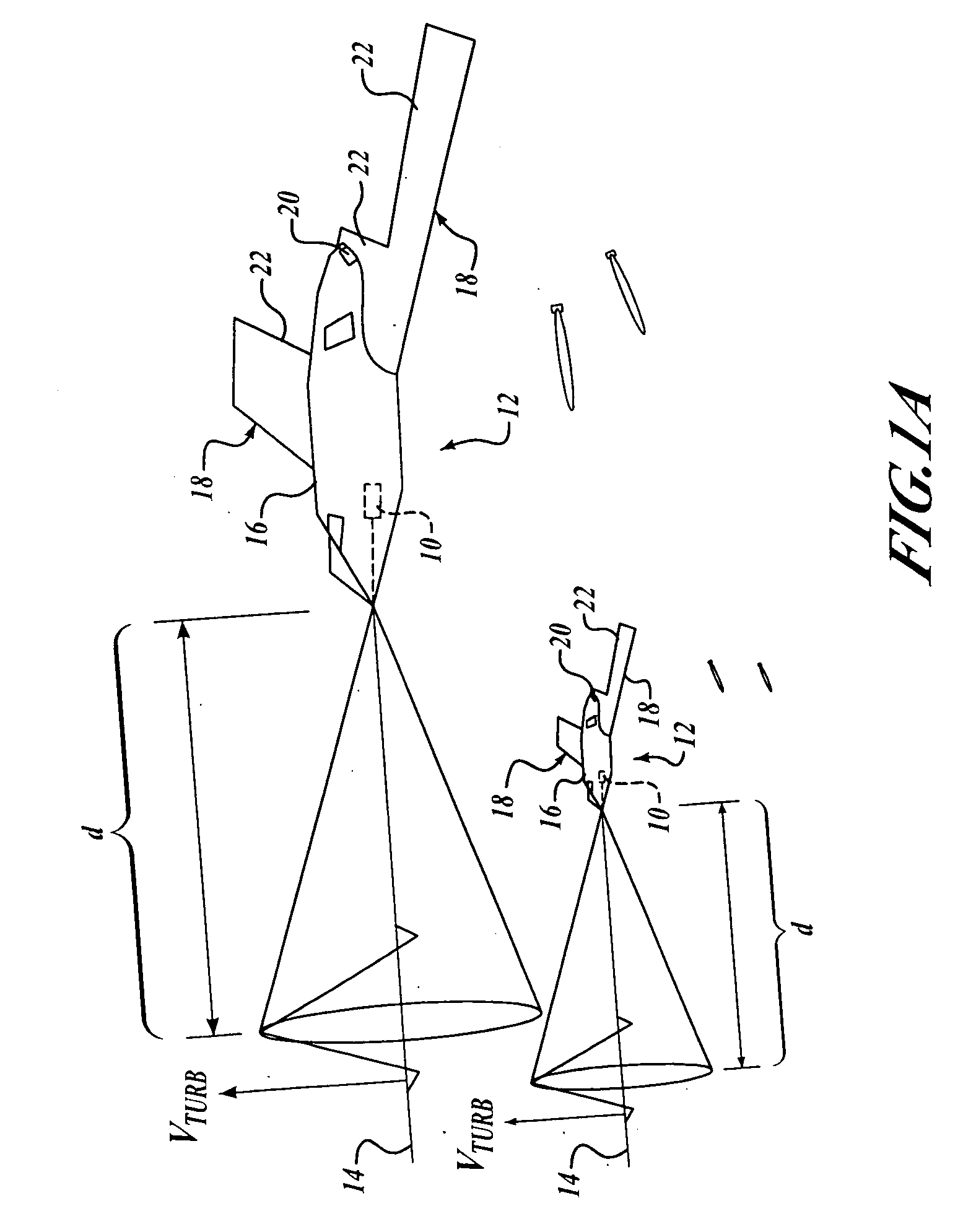Proactive optical wind shear protection and ride quality improvement system
a technology of optical wind shear protection and protection system, applied in the field of flight control avionics, can solve the problems of unmet needs in the art for a system, increased operational errors, and frequent turbulence of aircraft, and achieves the effects of improving the ride quality of passengers, and reducing the effect of turbulen
- Summary
- Abstract
- Description
- Claims
- Application Information
AI Technical Summary
Benefits of technology
Problems solved by technology
Method used
Image
Examples
Embodiment Construction
[0033]By way of overview, embodiments of the present invention automatically correct flight path of an aircraft onto a predetermined trajectory. A sensor is configured to sense speed of air relative to the aircraft at a predetermined distance in front of the aircraft. A navigation system is configured to determine displacement of a flight path of the aircraft from the predetermined trajectory. A processor is coupled to receive the sensed speed of air from the sensor and the displacement of the flight path from the navigation system. The processor includes a first component that is configured to determine whether the speed of the air at the predetermined distance is indicative of turbulence, and a second component that is configured to automatically generate control signals to correct the flight path of the aircraft from the displacement onto the predetermined trajectory by a time when the aircraft enters the turbulence.
[0034]Referring now to FIG. 1A, an exemplary system 10 according...
PUM
 Login to View More
Login to View More Abstract
Description
Claims
Application Information
 Login to View More
Login to View More - R&D
- Intellectual Property
- Life Sciences
- Materials
- Tech Scout
- Unparalleled Data Quality
- Higher Quality Content
- 60% Fewer Hallucinations
Browse by: Latest US Patents, China's latest patents, Technical Efficacy Thesaurus, Application Domain, Technology Topic, Popular Technical Reports.
© 2025 PatSnap. All rights reserved.Legal|Privacy policy|Modern Slavery Act Transparency Statement|Sitemap|About US| Contact US: help@patsnap.com



